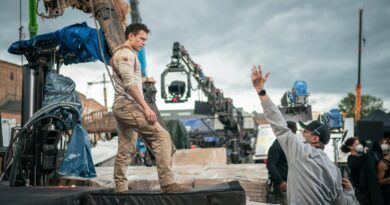Diversity and Representation in Hollywood: Progress and Challenges
Introduction
In recent years, the entertainment industry, and Hollywood in particular, has come under scrutiny for its lack of diversity and representation. While there have been significant strides towards addressing these issues, challenges still persist. This article explores the progress that has been made in promoting diversity and representation in Hollywood, while also examining the obstacles that continue to hinder comprehensive change.
Progress in Representation
Over the past decade, Hollywood has made notable strides in increasing the visibility of underrepresented groups on screen. The success of films like “Black Panther,” which celebrated African culture and showcased a predominantly Black cast, demonstrated that diverse stories can resonate with global audiences. Similarly, “Crazy Rich Asians” provided a platform for Asian actors and stories, challenging the long-standing stereotype that Asian-led films could not achieve box office success.
Television has also seen significant progress in representation. Shows like “Pose” and “Transparent” have put transgender characters and stories in the spotlight, contributing to greater acceptance and understanding of LGBTQ+ issues. Additionally, “Grey’s Anatomy” and “Empire” have portrayed diverse casts and storylines, helping to normalize the presence of characters from various racial and ethnic backgrounds.
Challenges in Authenticity
While progress has been made, challenges remain in accurately portraying the experiences of underrepresented groups. The issue of “whitewashing,” where white actors are cast to play characters of different ethnicities, continues to draw criticism. This practice not only denies opportunities to actors from marginalized communities but also perpetuates stereotypes and reinforces the idea that only white actors can carry a film’s success.
Authenticity also extends to behind-the-scenes roles. The lack of diversity among directors, writers, and producers can result in stories being told through a limited perspective. Inclusive storytelling requires input from individuals who have lived the experiences being depicted, ensuring that narratives are nuanced, respectful, and accurate.
Barriers to Entry
One of the persistent challenges in achieving diversity in Hollywood is the systemic barriers that exist in the industry. Limited access to resources, networking opportunities, and mentorship programs disproportionately affect aspiring filmmakers and actors from underrepresented backgrounds. This lack of support can hinder their progress and make it difficult to break into the industry.
Moreover, the reliance on established networks for casting and hiring perpetuates a cycle of exclusion. Industry connections often favor those who come from privileged backgrounds, making it harder for talented individuals from marginalized communities to showcase their skills.
The Need for Intersectionality
True representation goes beyond just racial and ethnic diversity; it also encompasses factors like gender, sexuality, disability, and socioeconomic background. Intersectional representation recognizes the multifaceted identities of individuals and tells stories that reflect the complex realities of their lives. For instance, a character who is both LGBTQ+ and a person of color can provide a richer and more authentic portrayal of the challenges and triumphs they experience.
Conclusion
While Hollywood has undoubtedly made strides in promoting diversity and representation, the journey is far from over. The success of diverse films and television shows underscores the appetite for stories that reflect the diverse world we live in. However, challenges in authenticity, systemic barriers, and the need for intersectionality continue to shape the landscape of the industry.
To drive lasting change, Hollywood must commit to inclusive hiring practices, accurate representation, and amplification of underrepresented voices. Efforts should extend beyond on-screen diversity to behind-the-scenes roles and decision-making processes. Only through comprehensive and sustained action can the entertainment industry overcome its historical shortcomings and truly become a platform that celebrates the richness of human experiences in all their forms.



